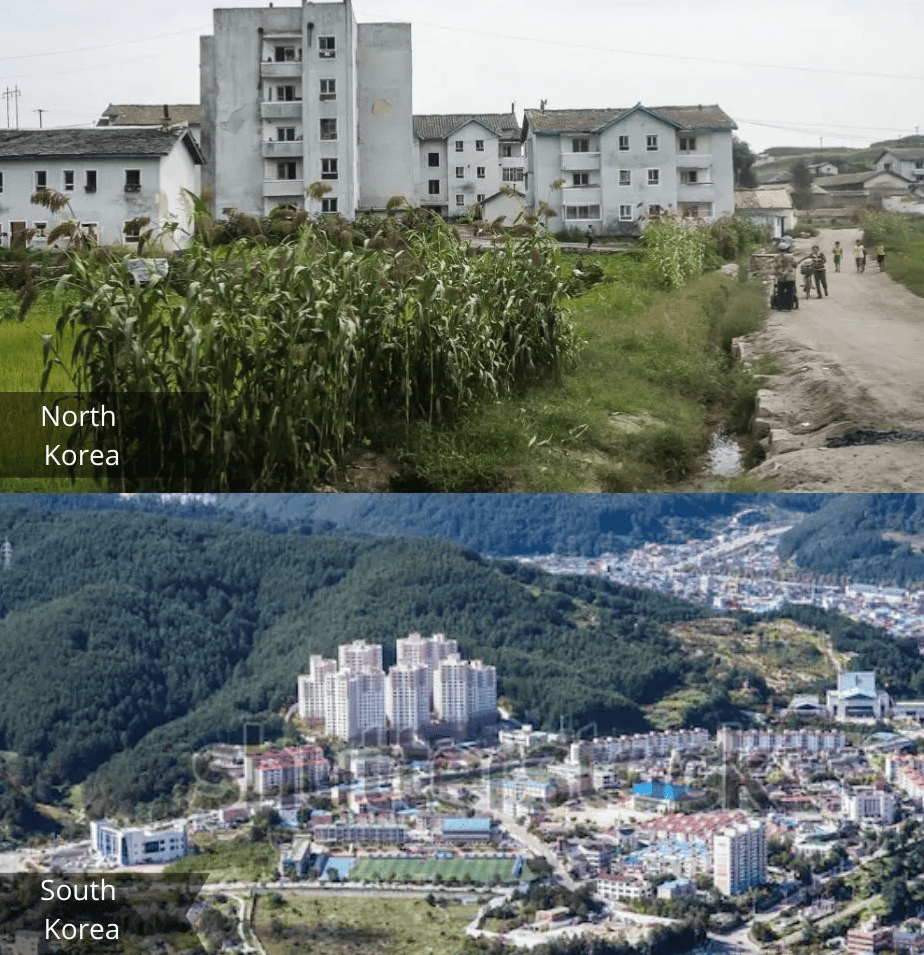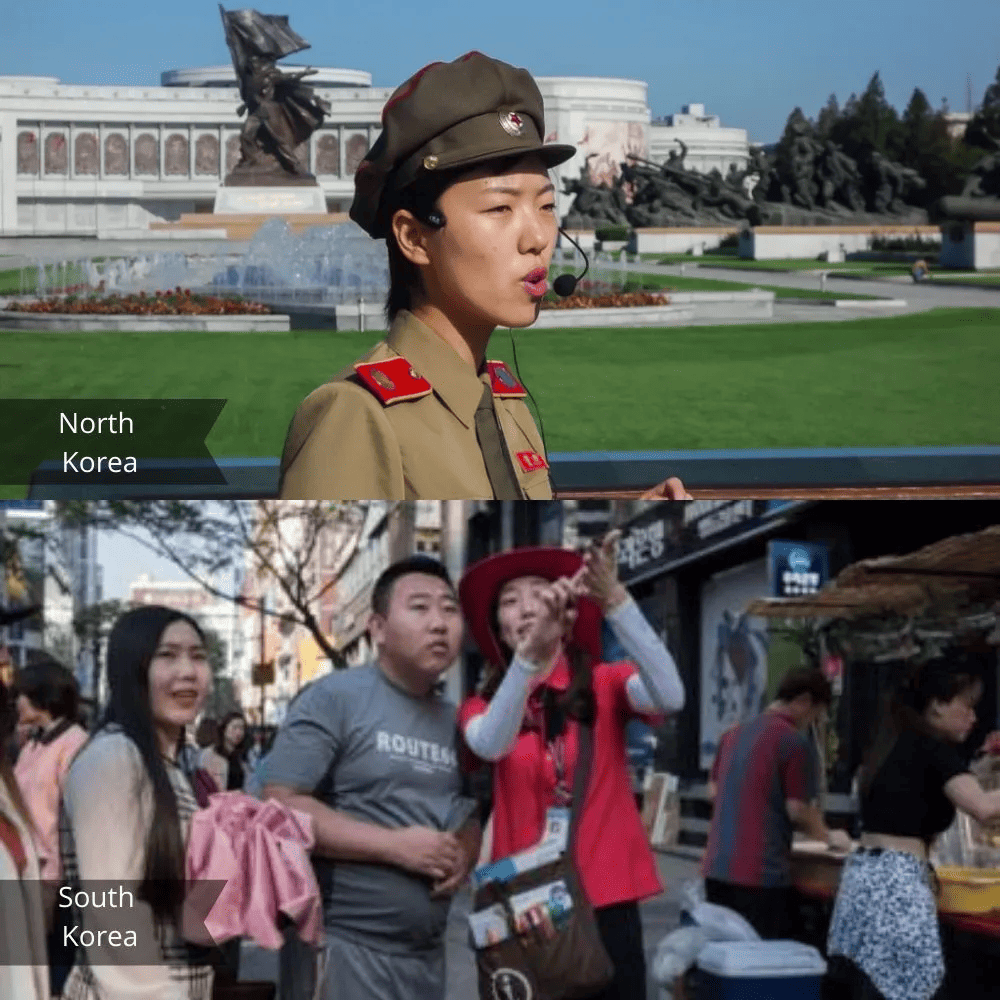Small Towns
While the contrast between life in the capitals of North and South Korea is noticeable, the divide becomes even more pronounced when we venture into the rural regions of both countries. Consider these two small towns as examples. The top image depicts a rural North Korean city characterized by aging buildings needing maintenance, showcasing a sense of historical preservation. On the other side of the spectrum is the South Korean town, which, although situated outside the modern urban center, maintains a more modern appearance while retaining a touch of its rural character.

These rural towns exemplify the distinctive atmospheres and developmental disparities in less urbanized North and South Korean areas. They reflect the varying levels of infrastructure, economic development, and cultural preservation that define life in these regions.
Tour Guides
Tourism dynamics in North and South Korea further highlight the dissimilarities between the two nations. While tourism in South Korea flourishes, North Korea remains relatively closed to foreign visitors due to political tensions. Consequently, tour guides in each country exhibit contrasting styles and levels of informality. The South Korean tour guide presents a more relaxed appearance, occasionally incorporating colloquial language and slang into her tourist interactions. In contrast, the North Korean tour guide maintains a formal demeanor, suggesting a stricter approach to guiding visitors, potentially reflective of the political climate.

These differences in tour guide attire and communication styles reflect the broader constraints and opportunities that shape the tourism industry in North and South Korea.
